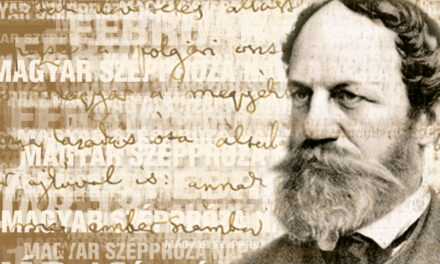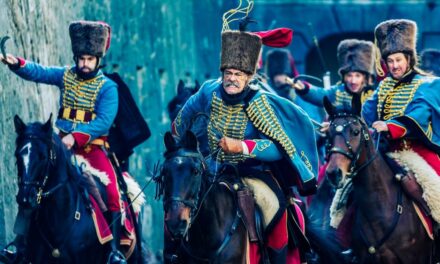"A nation that does not know its past does not understand its present, and cannot create its future!"
Europe needs Hungary... which has never let itself be defeated.
Jellasics attacks Hungary
On the day when Jellasics crossed the Dráva River and entered the territory of the Kingdom of Hungary on September 11, 1848, the Batthyány government resigned. Behind the resignation lay serious, almost unsolvable internal and foreign political problems. One was that Vienna could not put up with the implementation of the April laws, so it did everything to overthrow the government. On the one hand, it constantly fueled the discontent of the ethnic (Olach, Tót, Rác, Croatian, etc.) peoples. He encouraged them to resist and revolt against the Hungarians. On the other hand, the eight-century-old feudal bonds had to be dismantled and solved at the same time, which did not happen without bloodshed in the Western countries (England, France, the Low Countries).
 Although the attack was carried out by the Croatian army from the south, it was clear that the operation was directed from Vienna. This move by the court disregarded the April laws, which were, however, signed by King Ferdinand V. And the "democratic West" remained silent, as always, when it came to Hungarian interests. This silence gave the Habsburgs a free hand to crush Hungarian freedom. A few days later, the National Defense Commission was established, the chairman of which was Lajos Kossuth, who went on a recruiting tour to the Great Plains on September 24.
Although the attack was carried out by the Croatian army from the south, it was clear that the operation was directed from Vienna. This move by the court disregarded the April laws, which were, however, signed by King Ferdinand V. And the "democratic West" remained silent, as always, when it came to Hungarian interests. This silence gave the Habsburgs a free hand to crush Hungarian freedom. A few days later, the National Defense Commission was established, the chairman of which was Lajos Kossuth, who went on a recruiting tour to the Great Plains on September 24.
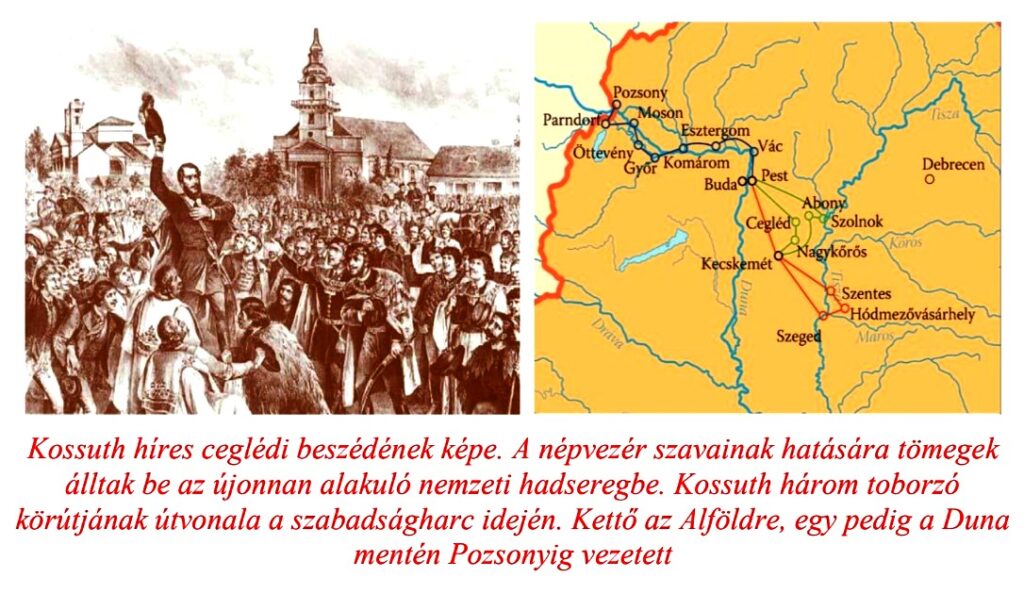
The first attack of the yard
King Charles Albert of Sard-Piedmont allied with Italian cities against the Austrian Empire, which posed a serious military challenge to Vienna. However, the Austrian troops led by the Czech general Radetzky crushed the Italian uprisings in the summer of 1848. This did not favor the Hungarian revolution, as the Habsburgs were thus able to turn a significant part of their forces against our country. Vienna has now openly announced that it does not recognize the April laws.
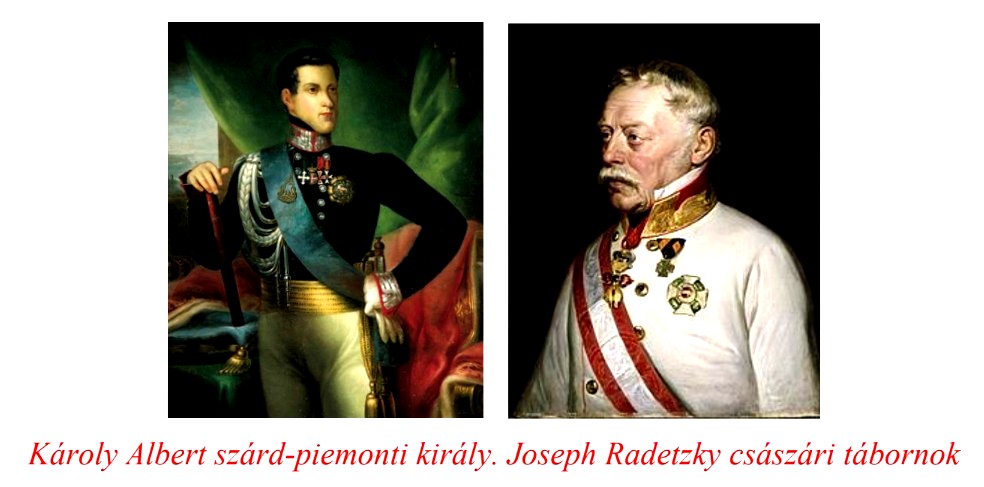
In addition to the Croats, the court circles were also able to incite the Serbs against Hungary. Already in the summer of 1848, the Ráks demanding an independent Serbian Vojvodina attacked the defenseless Hungarian villages in the southern region and carried out unprecedented carnage. (This was not without precedent, since from Turkish times onwards, the Ráks exterminated the Hungarians, sometimes dressed in Turkish and sometimes imperial uniforms. Huge areas thus became uninhabited, which were then populated by them.) It may well be that, in addition to the Hungarians, the Ráks were the Swabians and the Romanian villages were also attacked, but this did not mean that Transylvanian Romanians did not also turn against the Hungarians. The Romanians took up arms against the Unio and rigidly abstained from the unification of Hungary and Transylvania. They kept saying that "he poisoned every wall at the table of Hungarian freedom".
Under the leadership of Kossuth, who, having found the voice and spirit of the people, was able to mobilize an army so willing to fight - admittedly, still untrained - to the cause of the revolution that it was already a serious problem for Vienna. Moreover, the king's signature made the constitution official, which stated the possibility and legitimacy of the organization of the national armed forces. Even the Austrian soldiers swore to the army led by Minister of War Lázár Mészáros. Vienna has only one trump card left, the evasion of the nationals against the Hungarians. Furthermore, the Austrian shipments of money, weapons, and munitions fell into the hands of the Serbs and Croats.
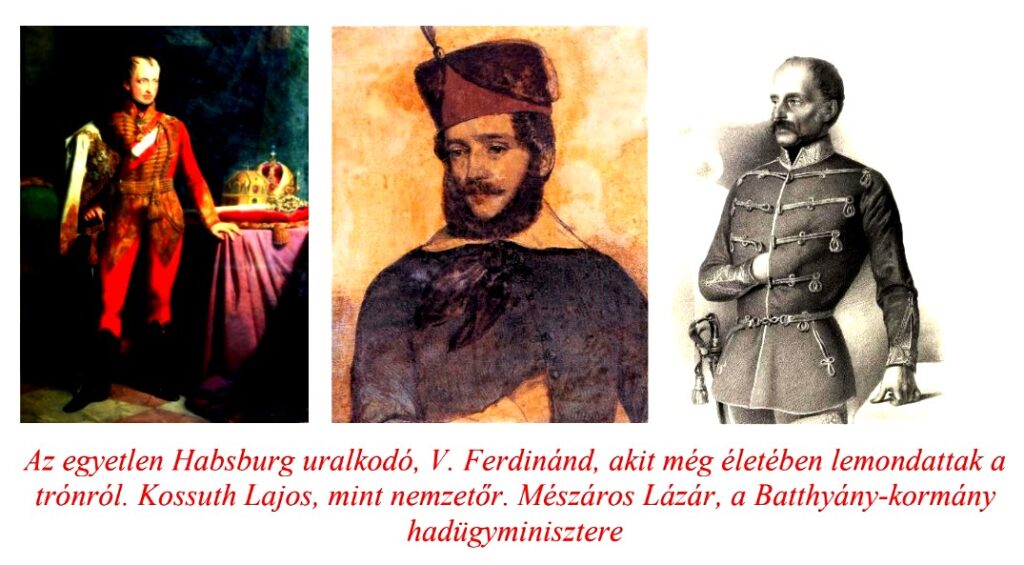
Josip Jellasics was an enemy of the Hungarian revolution from the beginning. The Viennese Minister of War, Major General Latour, intended the Croatian treatment to play a key role in the attack on Hungary. Jellasics' first step was when he invaded Fiume in August 1848.
During the days of Jellasics' advance, the court appointed Ferenc Lamberg as temporary paladin and military commander, who had just arrived in Pest-Buda to take over his office. The enraged crowd, burning in a revolutionary mood, recognized the man of the court and murdered him on the ship's bridge.
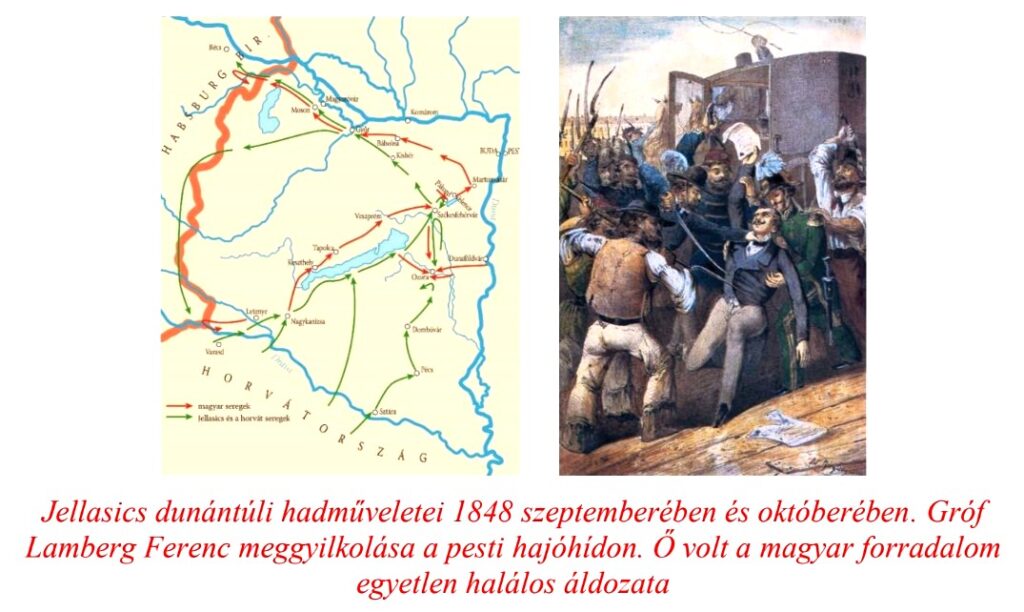
Prime Minister Lajos Batthyány and Justice Minister Ferenc Deák traveled to Vienna at the end of August 1848 to persuade the ruler to withdraw the Croatian attack.
However, Ferdinand V did not even receive the Hungarian delegation, which was a sign of the armed attack. When Jellasics crossed the border at the head of his army of 35,000 on September 11, the Hungarian Prime Minister resigned. Ferenc Ottinger, the commander of the Hungarian army in the Drava, escaped to Jellasics, which further worsened the situation of the Hungarians. The Croatian Ban issued a proclamation to the people of the attacked country, in which he explained that he had come as the commander of the ruling house and would lead the rebels back under the rule of Vienna. The Hungarian officers were in a difficult situation because, on the one hand, they were bound by their oath to the Hungarian constitution and their commitment to the homeland. On the other hand, they feared the revenge of the Habsburgs. Thus, not taking up the fight at that time, they retreated towards Fehérvár.
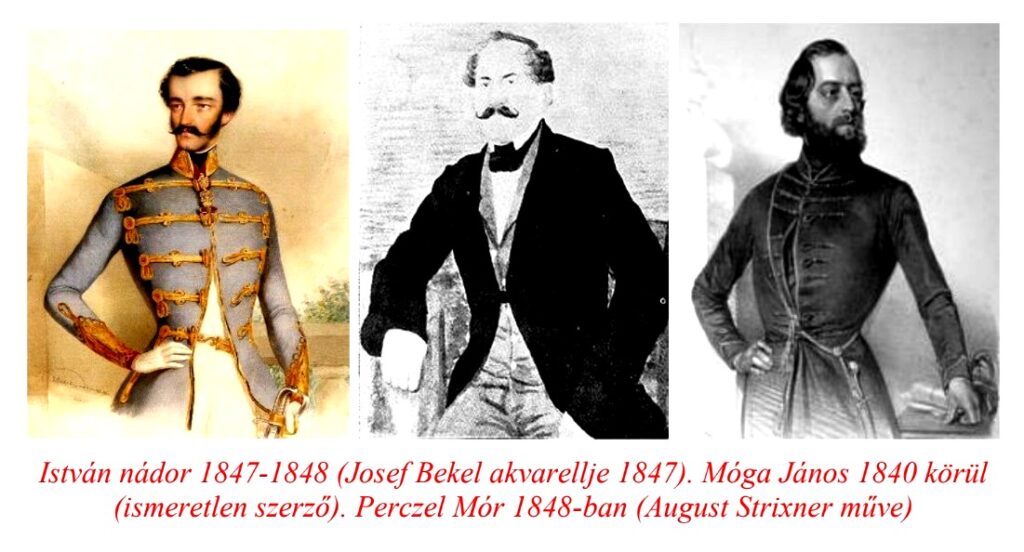
At Batthyány's suggestion, the Hungarian leadership recommended Palatine József's son and Palatine István, his successor in the palatine dignity, for the post of army commander. Palatine József, the only "Habsburg who became Hungarian", unfortunately died in 1847.
Despite the fact that Archduke István was his superior, Jellasics did not agree with the Palatine, who - among other reasons - resigned from his position and left the country. Batthyány announced a popular uprising, and Kossuth issued a proclamation to the Hungarians to take up arms. Kossuth, in order to prove himself with actions, went on a recruiting tour. Thanks to this, by the end of September, an army of 16,000 people was already waiting for the trained and outnumbered Croatian troops on the northern shore of Lake Velence.
The Battle of Pákozd
Lieutenant-General János Móga was asked to head the newly organized, untrained army. At the general staff meeting held in the Sukoro church on September 28, Móga assumed control only on the condition that Jellasics attacked first. This attack took place on September 29, 1848.

Confident in his double superiority, Jellasics launched an encircling operation in the area between Pákozd and Sukoró, and wanted to push the Hungarians into Lake Velencei. The National Guardsmen and the National Guards repulsed the repeated attacks one after another, blocking the enemy's path towards Buda like a wall. The encirclement operation of the enemy was prevented by Mór Perczel's army of 4,000 men, which lined up on the southern shore of Lake Velence, making encirclement impossible. The battle was finally decided by the gunners, who caused significant damage to Jellasics' army. The Croatian ban was forced to ask for a truce, which acknowledged the victory of the Hungarians. Taking advantage of this, the enemy coming from the south fled the country towards Vienna on October 1. The success of Pákozd culminated in the disarming of the Austrian guards stationed in the town by the Fehérvár insurgents. At Ozora, on October 7, the national guards of Tolna won a victory against Jellasics' army of 10,000 people. The Ozora operation was directed by Artúr Görgey and Mór Perczel. When Roth and Philippovich, the commanders of the attacking army, learned of the defeat at Pákozd, they immediately surrendered.

Testimonies and consequences of the Battle of Pákozd
The fact that the warring parties received the same military training from both the Hungarian and Austrian sides gave rise to many contradictions. They swore to the same constitution, the same king. At Pákozd, both officers and privates chose according to their own conscience, and they believed that they were on the legal side and were acting according to orders. During the later battles, this was no longer a valid concept. Jellasics suffered not only a military but also a moral defeat, because during the three-day truce he fled the country leaving his own reserve troops behind.
The battle of Pákozd involved few losses compared to later major clashes. Its importance was not even shown in this. It proved to be a huge military, moral, and political factor, as it gave life, hope, and faith to the later organization of the army, and it laid the foundation for Kossuth's role as a people's leader, among other things. (In 1948, on the 100th anniversary of the victory in Pákozd, September 29 became People's Army Day, and after the Rákosi era, Armed Forces Day, and we still commemorate the victory in Pákozd every year. However, since 1992, May 21, the day of the recapture of Buda event became Hungarian National Defense Day.)
Thought provoking! How could the centuries-long relationship between the Habsburgs and part of the Hungarian nobility develop in such a way that Vienna - with perhaps one exception, and that was the Bocskai War of Independence - always put the Hungarians in a subordinate position. Those who then helped the Austrians in trouble again and again the next time, only to have them sit on our necks again. After the death of Mátyás, the country was permanently divided. Of course, in three parts, but the Turks came, wiped out half the country, and then left. However, the Habsburgs were here before, then they robbed our country for another two centuries, and they still look down on us today.
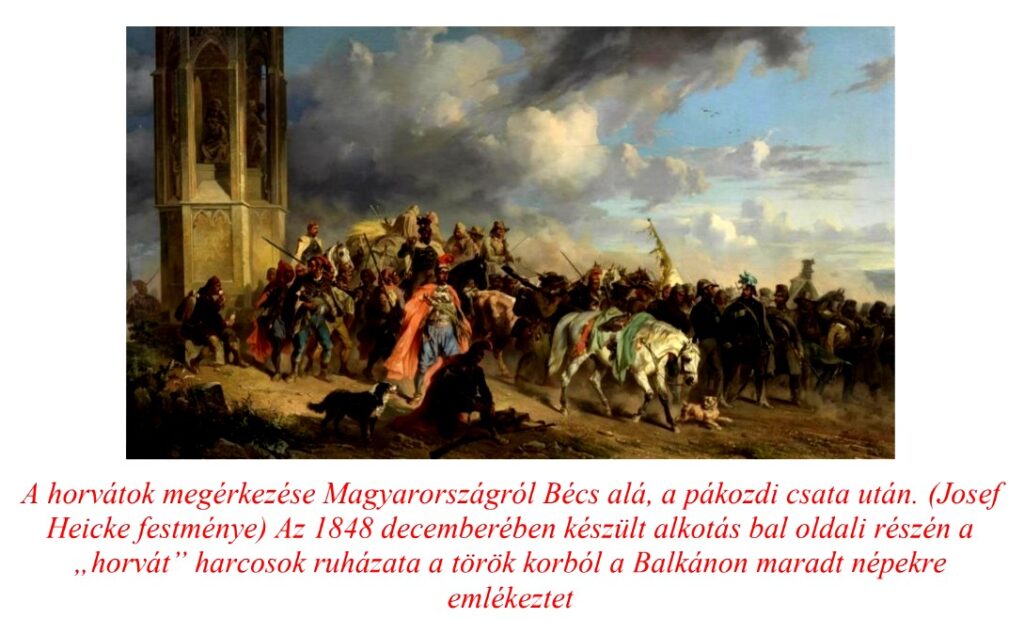
On the news of the victory of the Hungarians, the Second Viennese Revolution broke out in Vienna on October 6. (The first was on March 13, 1848. October 6 was burned into the vengeful consciousness of the Habsburgs, since it was no coincidence that 13 generals were executed in Arad on this day in 1849.) The anger of the Viennese insurgents turned against Minister of War Latour, who wanted to send troops against the Hungarians. The revolutionaries captured Latour and hung him on a lamppost. (Lamberg in Pest and Latour in Vienna were victims of the revolution.) The court fled to Olmütz in Moravia, while the imperial army under the command of Prince Windischgratz was drawn around Vienna. Jellasics' fleeing army soon joined him.
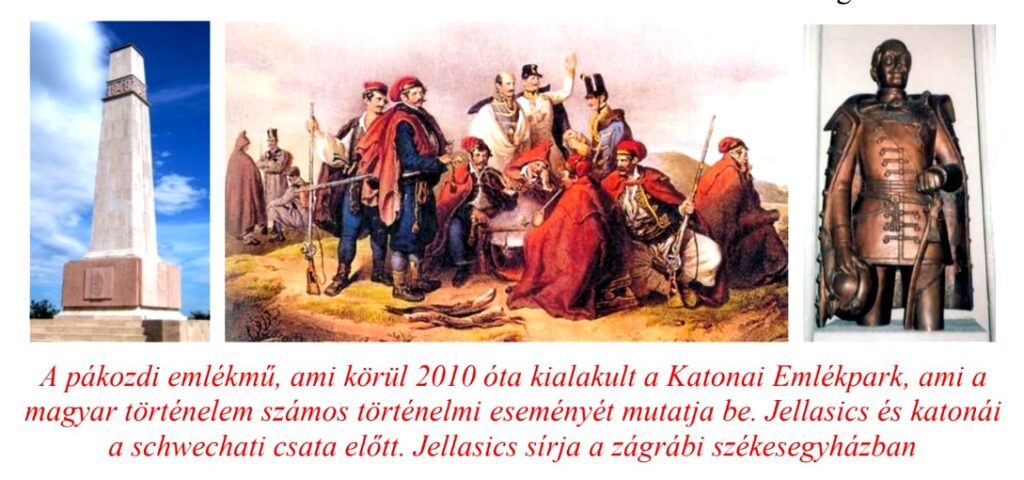
The Hungarian army chasing the enemy stopped at the border because, following the laws, it did not want to invade the territory of Austria. Many imperial officers also served in the general staff, who argued that the Hungarian revolutionary army could not attack Vienna. They debated this for three weeks, while they crossed the border twice, but then turned back. When they decided to occupy Vienna for the third time, it was already too late. On October 30, 1848, the reorganized imperial army defeated the Hungarian army at Schwechat near Vienna.
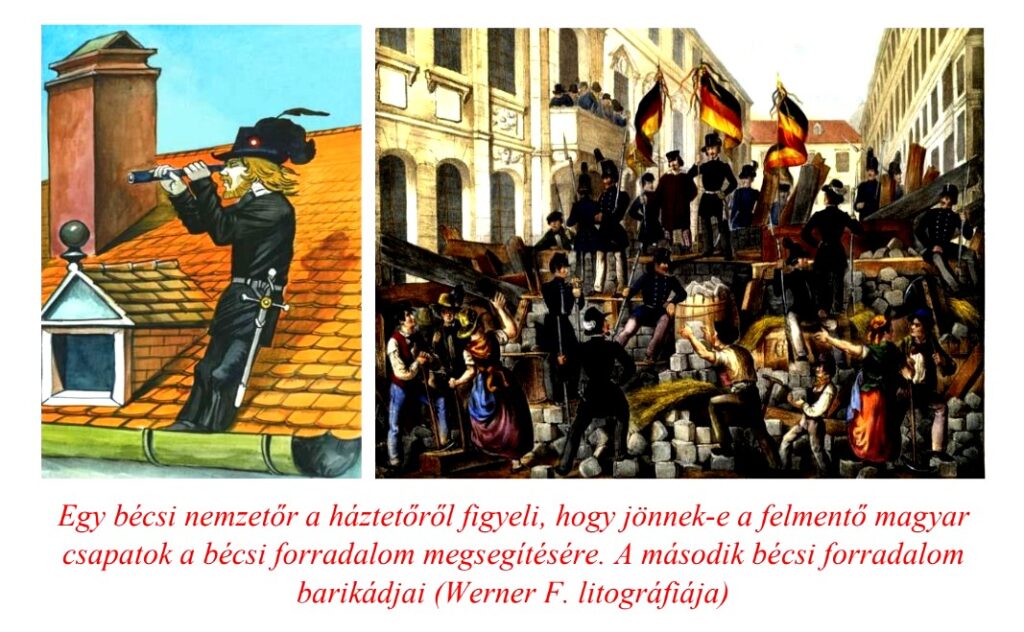
The Austrian forces led by Windischgratz turned back towards Vienna from Schwechat and drowned the remaining revolution in blood. During the freedom struggle, the always law-abiding Hungarians will make the same fatal mistake - that they did not take advantage of their strategic advantage - once again.
Another attack by the yard
The victory in Schwechat and the suppression of the Vienna revolution radically changed the political and military situation. In Olmütz, Ferdinand V was abdicated (this had never happened in the history of the Habsburgs), and on December 2, 1848, 18-year-old Ferenc József took his place. The Austrian General Staff did not stand idly by, they wanted to put an end to the Hungarian "rebellion" immediately. In mid-December 1848, a trained and well-equipped army of 44,000 men set out for Pest-Buda, led by Prince Windischgratz. The new emperor, but lawless king, considered the April laws null and void. Court diplomacy asserted that the laws were signed by Ferdinand V and not by József Ferenc.

The balance of power was not equal, as against the 44,000-man Austrian army, Artúr Görgey was only able to field a 25,000-man, poorly equipped, rookie army. In contrast to the 103 cannons of the Hungarians, the imperial army had 216 modern cannons.
The confident imperial leadership, confident in its superiority, had no doubts about the final victory. Görgey, recognizing the situation, did not undertake a battle, did not want to sacrifice his men. In addition, Mór Perczel lost a battle at Mór on December 30, 1848, which resulted in the evacuation of the capital. The Parliament, the National Defense Commission and the government offices started moving to Debrecen, the new capital, on January 1, 1849, in the cold, freezing weather. It is interesting to mention that the documents and important equipment were transported to Szolnok on the already functioning railway. There, transferring the government's documents onto carts, they continued towards Debrecen.
On September 15, 1848, Kossuth initiated the establishment of a parliamentary committee, which made it possible to quickly and practically manage the affairs of the army and bypass the more difficult decision-making of the government. Among other things, Batthyány did not have to report to the public of the parliament on the matters concerning the affairs of the army, which require secrecy. Furthermore, the National Defense Commission had the right to control and override the executive power in the affairs of the army. In addition to Kossuth, the members of the committee were among the radicals, such as Pál Nyáry, László Madarász, and János Pálffy. The establishment of the National Defense Commission was announced on September 21, and the very next day Kossuth referred to the role of the new organization as equivalent to the government in one of his speeches.
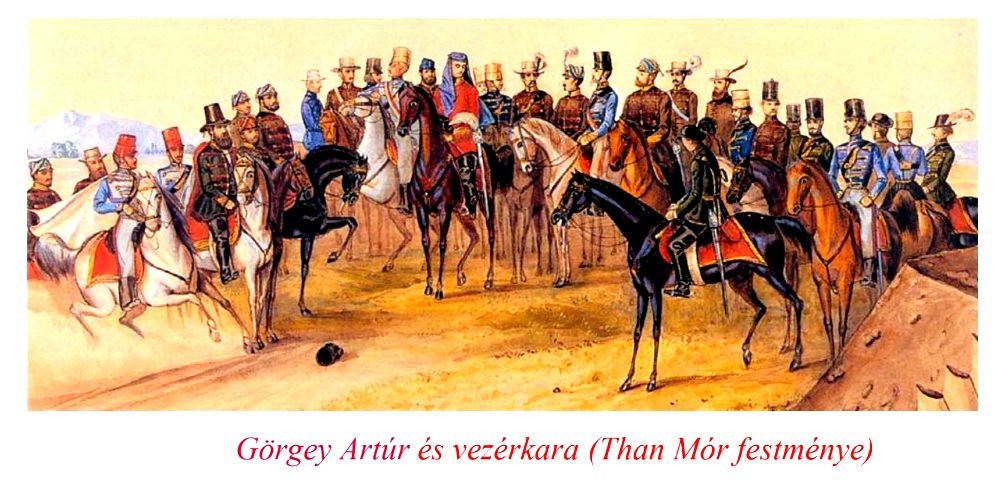
The operations in Transylvania
Kossuth made the right decision in mid-December 1848, when the 1830-1831. He entrusted József Bem, the hero of the Polish War of Independence in 1960 and later gained European fame in the French Revolution, to lead the Transylvanian armies in a difficult situation. The imperial commander-in-chief Antal Puchner, with the help of the Romanian insurgents, almost completely expelled the Hungarians from the land of Transylvania. Only Háromszék remained in Hungarian hands, which was defended by the master gunsmith Áron Gábor.
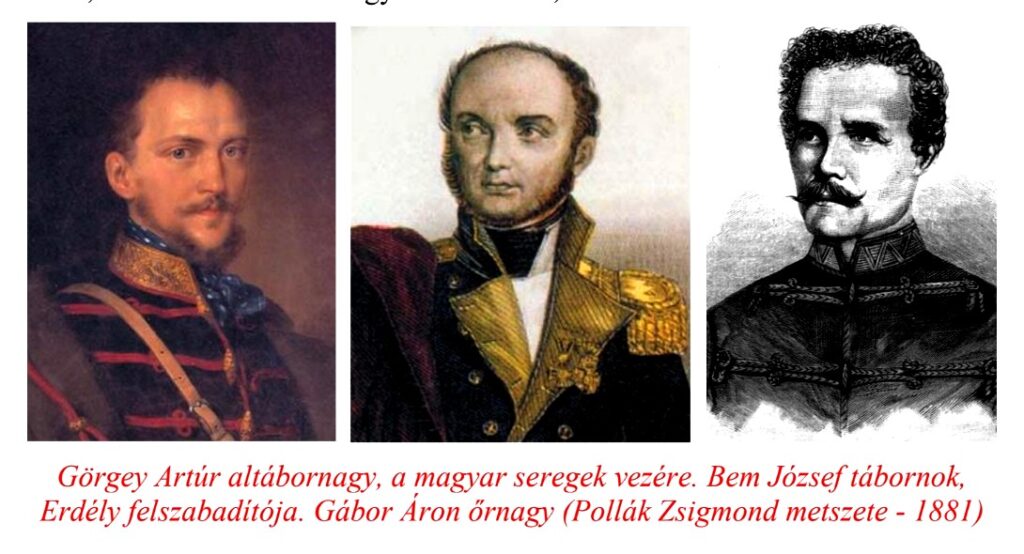
József Bem recaptured Cluj by Christmas 1848. This not only marked the beginning of the liberation of Transylvania, but it was a psychological moment for all Hungarians, which sent a message that the fight should not be given up. Kossuth took on an enormous task when he decided that the country should arm itself. He organized and managed the operations, from the casting of cannons to the sewing of the uniforms of the national guardsmen, from the creation of food supplies to the production of gunpowder, and he mostly supervised all of them himself. The seemingly impossible task was succeeded, the military industry got back on its feet.

The first four cannons were manufactured in Sepsiszentgyörgy from November 1848, and the rest, nearly seventy, until June 1849 in Kézdivásárhely. A school was also established for the training of gunners, which was organized and managed by Áron Gábor.
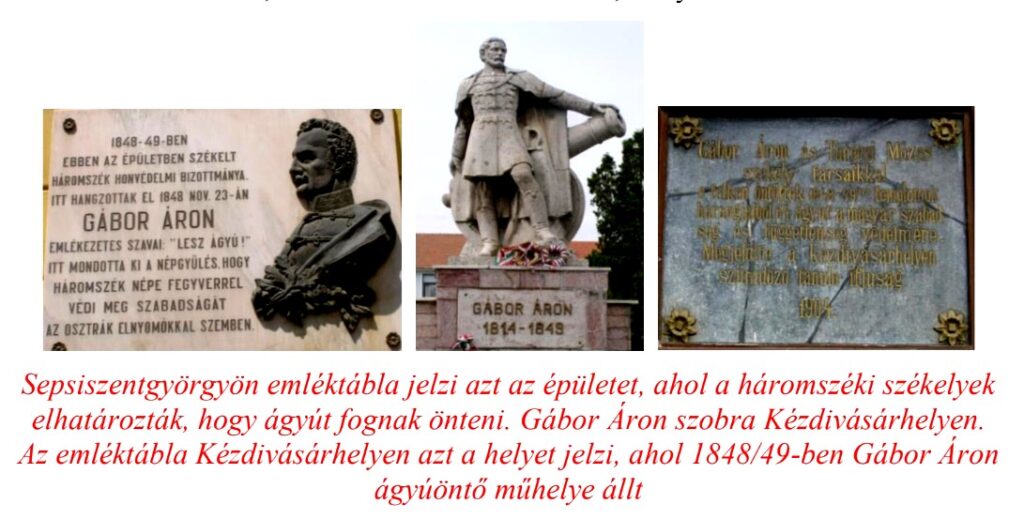
The Vác manifesto
While the government moved to Debrecen, Görgey marched north along the Danube with the saved army. On January 5, 1849, the general published a declaration in Vácott. The essence of this was that, sticking to the April laws, Görgey demanded the restoration of the honor of the officers and their united stand for the freedom struggle. Given that some of the officers in the National Guard still swore an oath to the emperor and the king, and did not even feel committed to the cause of the Hungarians - especially the many soldiers of Austrian origin - they were uncertain. Görgey gave the officers the opportunity to decide which side they wanted to take. Those who felt that they wanted to serve the emperor instead could leave. Those who remained, on the other hand, had to swear to defend the Hungarian homeland. The army thus cleared spent the winter in the Highlands, so that in the spring of 1849 it could fight against the imperial forces.
 Author: Ferenc Bánhegyi
Author: Ferenc Bánhegyi
(Header image: recording by István Pető)
The parts of the series published so far can be read here: 1., 2., 3., 4., 5., 6., 7., 8., 9., 10., 11., 12., 13., 14., 15., 16., 17., 18., 19., 20., 21., 22., 23., 24,, 25., 26., 27., 28., 29/1.,29/2., 30., 31., 32., 33., 34., 35., 36., 37., 38., 39., 40., 41., 42., 43., 44., 45., 46., 47., 48., 49., 50., 51., 52., 53., 54., 55., 56., 57., 58., 59.


